According to Forbes, flexible working is the way of the future. Businesses that want to improve employee retention and satisfaction should allow a flexible schedule for all staff members.
Flexible work also offers benefits to businesses. This is a cost-effective option to keep employees engaged at work while still pursuing their outside lives and interests, especially if your workers still work in the office either full-time or part-time.
But how do you manage your employees when they work different hours or are working from home? Here we offer the 10 management guidelines to follow when your staff works a flexible schedule. But first, let’s find out what flexible work schedules are + how and to whom they benefit most.
Types of Flexible Work Schedules
- Flextime: This is a schedule that allows employees to vary the start and end times of work, as long as they complete a set number of hours per day or week. Imagine being able to come into work at 10 AM instead of 9 AM, and leaving at 6 PM instead of 5 PM. That’s the ultimate dream for many employees who want to escape the rigid 9-5 grind.
- Compressed workweeks: Have you ever heard of the 4-day workweek? Well, that falls under the umbrella of compressed workweeks. Employees work longer hours over fewer days, so they get an extra day off.
- Telecommuting: In simpler terms, working from home. This type of flexible schedule allows employees to work remotely for part or all of the week. No more battling traffic or dealing with noisy coworkers. Just you, your laptop, and your kitty cat.
- Job sharing: This is when two or more employees share the responsibilities and hours of one full-time job. It’s perfect for those who want to work part-time but still maintain a challenging career. Plus, you get to split the workload and have a buddy of whom to bounce ideas off.
Benefits of Flexible Work Schedules for Employees
- Improved work-life balance: Flexible work schedules allow employees to better manage their time and attend to their personal needs, such as picking up the kids from school or going to that yoga class they’ve been putting off for ages. This leads to higher job satisfaction and overall happiness.
- Better health: By reducing the amount of time spent commuting to and from work, flexible work schedules can lower stress levels and promote better mental health. Also, data shows that employees who have the flexibility to work from home or choose alternative work hours are less likely to call in sick (however, it’s vital to ensure no one is working while actually feeling unwell – presenteeism is harmful to employees and employers alike).
- Cost savings: Flexible schedules not only allow employers to save on overhead costs such as energy, rent, and office supplies but also help employees reduce transportation costs, as well as childcare and eldercare expenses.
Benefits of Flexible Work Schedules for Employers
- Higher productivity: According to this research, 51% of knowledge workers reported being more productive thanks to asynchronous work and flexible schedules. It means that when employees are given the opportunity to work during their most productive hours, they’re able to produce even better results.
- Stronger team morale: By allowing your workers to have more control over their schedules, you’ll increase their happiness and job satisfaction. When they feel trusted and valued, they’ll be more loyal and motivated to do their best work. Besides, who wouldn’t want to work in a happy environment where everyone feels respected and appreciated?
- Attracting top talent: With so many companies now offering flexible work schedules, employers who don’t jump on the bandwagon might fall behind. By offering flexible work options, employers can better compete in the job market and retain the best and brightest employees.
Potential Drawbacks of Flexible Work Schedules
While flexible work schedules are all the rage these days, let’s not get too carried away with the praise just yet. Here are some potential drawbacks to consider:
- Blurred boundaries: When you can work from anywhere at any time, it can be hard to separate work from personal life. You might find yourself sending emails while cooking dinner, or answering calls on the weekends. Before you know it, you’re working 24/7.
- Lack of structure: Without a set schedule, it can be tough to stay productive and focused. You might find yourself procrastinating or getting distracted by other responsibilities. Plus, if your colleagues are working on different schedules, it can be hard to coordinate meetings and projects.
- Isolation: If you work from home or on a different schedule than most of your colleagues, it can be easy to feel disconnected from the rest of the team. You might miss out on important conversations or updates, and feel like you’re flying solo a lot of the time.
- Miscommunication: With people working on different schedules and in different locations, it can be easy to miscommunicate or miss important information. This can lead to delays, misunderstandings, and mistakes that could have been avoided with more face-to-face interaction.
Examples of Jobs with Flexible Schedules
- Freelance Writer: We’re talking about wordsmiths who can work from anywhere, anytime, as long as they have a reliable internet connection. They have deadlines, yes, but they also have the freedom to choose which hours of the day they want to work. Plus, they get to wear PJs all day and call it “work attire.”
- Graphic Designer: These artists can get really creative with their work and leave schedules. Some prefer to work in the morning, some in the evening, and some even in the wee hours of the night. As long as they deliver their designs on time, they can work according to their body clock.
- Online Teacher: Thanks to e-learning platforms, teachers can now offer their expertise to students from all over the world. They can choose to work at their own pace and time, and even record their lessons for later viewing. The best part? They don’t have to deal with noisy classrooms or unruly students (we’re not saying that ALL students are like that, but you get the point).
- Event Planner: Yes, event planning involves a lot of face-to-face meetings and running around, but there are also tasks that can be done virtually. Think: emailing vendors, updating social media pages, and creating timelines and checklists. Plus, with a flexible work schedule, they’ll always have time to recharge after a particularly stressful event.
- Sales Representative: These charismatic communicators don’t need a physical office – give them a phone and they can sell ice to an Eskimo. They might have to work outside of regular office hours to catch clients in different time zones, but in the end, the commission will make it worth it. Plus, you can compensate for overwork by taking an extra day off.
How to Manage Employees’ Flexible Schedules
1. Establish good communication
Communication is key in many aspects of life, especially in the working world. You’ll especially want to practice effective communication when your staff is working a flexible schedule.
There are many ways to stay in touch with your team members:
- Try instant messaging programs: there are many business-specific messengers where you can easily chat with your staff members.
- Have regular group meetings: Schedule a weekly or even monthly meeting via a remote video conferencing platform. You can use these meetings to check in with your staff members, plan projects, and more.
- Set tasks and deadlines: Establish a way for your staff to submit their projects and always set communication methods in case your staff members have questions or comments.
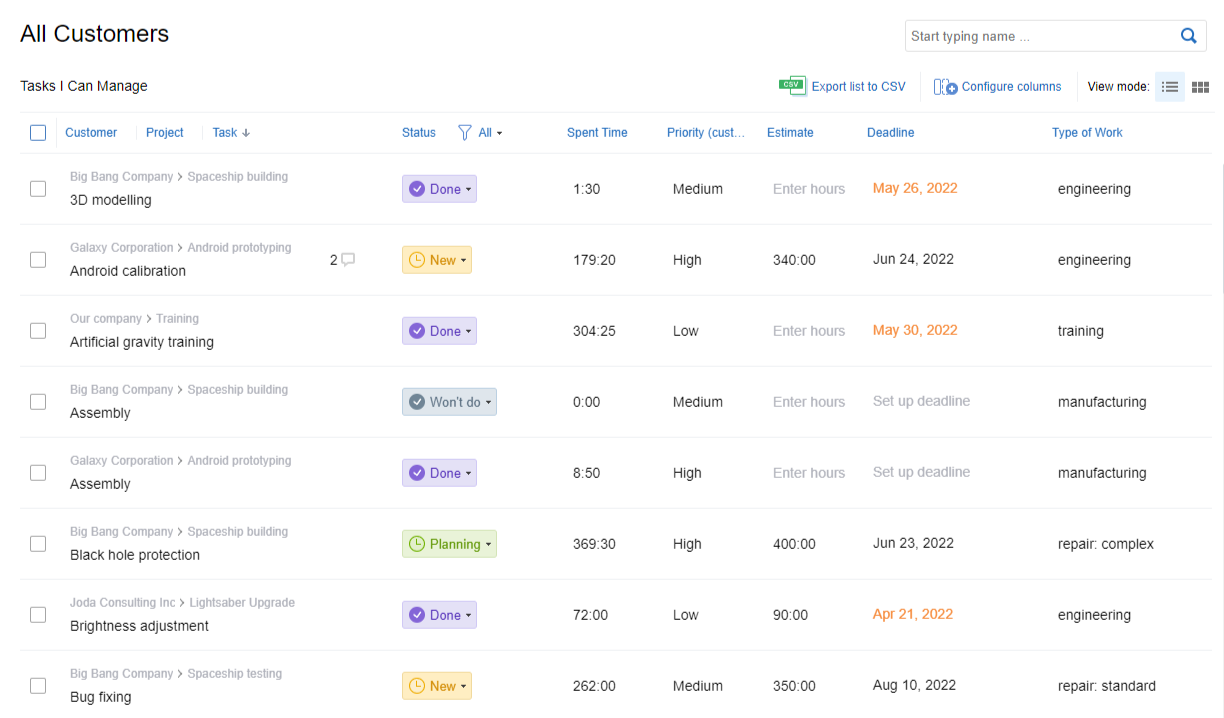
Create projects, set deadlines, and allocate tasks to employees using actiTIME.
2. Plan everything out
Before your staff member begins their flexible working schedule, plan everything out.
First, you’ll want to decide if flexible work should be implemented on an individual basis or an office-wide basis. If you have a small team, you may be able to implement flexible work on an individual basis. But you may have to handle this differently if you have a large staff. Set specific work-from-home hours and create a robust paid time off (PTO) or time-off request policy.
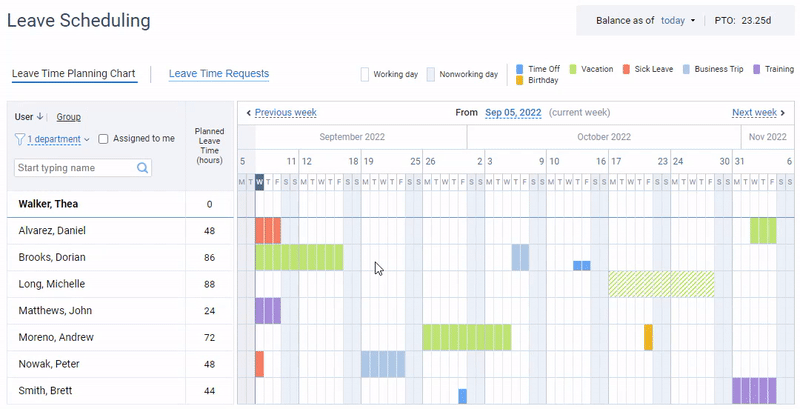
Submit and approve leave requests in an effortless way with actiPLANS.
3. Train your managers
Managing a remote working staff isn’t easy for everyone. If there are several managers and team leaders under you, you’ll want to train your management team to monitor staff members while they have a flexible schedule. You’ll likely need to set different policies and rules than you would for a full-time in-office work environment.
Require all employees to use time tracking software, report their progress, and meet deadlines. Train your management team to keep an eye on the progress through reports and analytics and to make sure your staff is making their deadlines.
Referring back to the first point, train your managers on communication and using different team messaging apps. Your managers should also be present in any remote meetings.

Track employees’ leave hours and the time invested in work using real-time widgets and other actiTIME reports.
4. Get HR involved
In addition to your management team, you should also get the HR department involved. Your HR team will likely have questions and concerns about the new policy.
While there may be problems during the beginning of your flexible work policy, try and decrease the HR stress as much as possible. Work with your HR team far in advance to create a system for employee productivity, complaints, schedule changes, and more. Add this to the employee handbook.
At the same time, you may also want to include some tasks for HR to do. Common examples include checking in regularly with staff members as well as monitoring their performance.
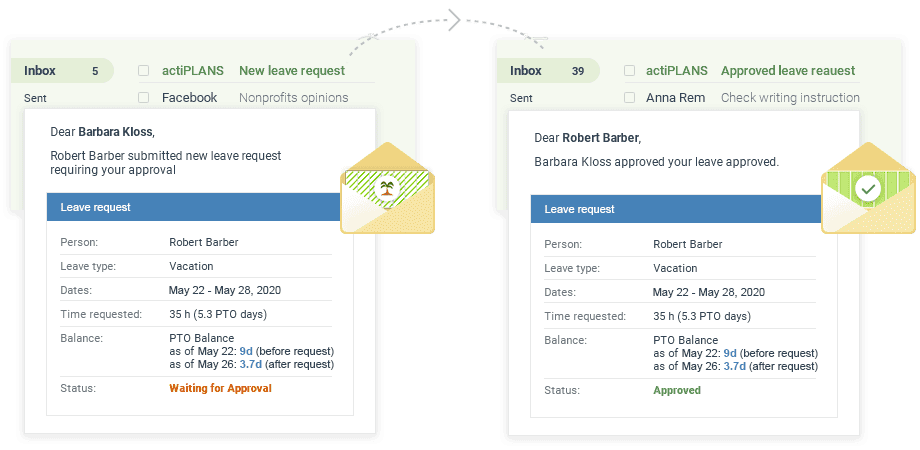
Streamline HR processes and save managers’ time with automated notifications, leave request approvals, and PTO accrual in actiPLANS.
5. Make the standard work schedule an option
While choosing your own work hours is a dream for most, many workers would prefer working a 9-to-5 workday.
This can be due to many reasons — some employees feel more productive in the office, they enjoy collaborating with others face-to-face, they’re distracted working from home, or maybe they just like it when their employer is only in the other room rather than on a messaging app.
If you require all staff members to have a flexible schedule, some staff members may not be as productive. It’s important to offer flexible work as an option, not a requirement. To do so, you need an attendance management system that allows workers to choose if they work remotely or from the office and for how many hours, as well as inform their project managers and other team members about it.
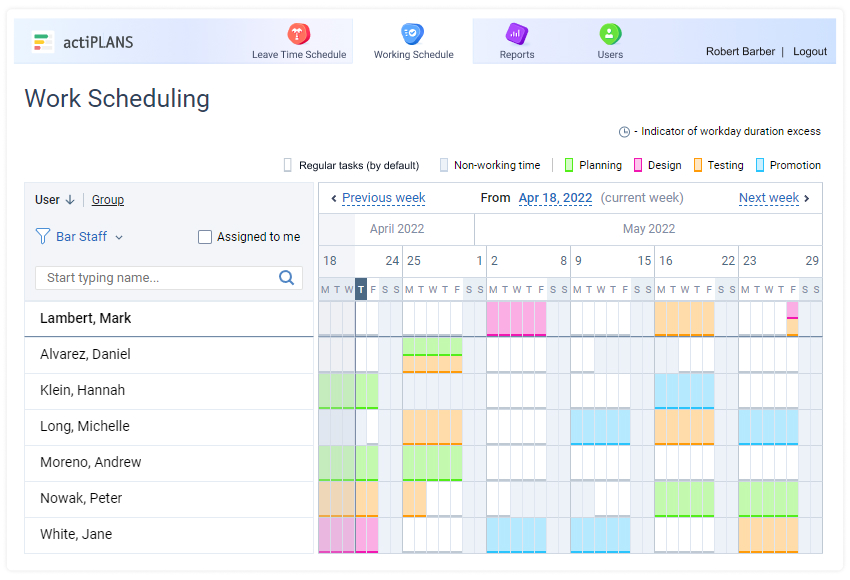
Easily schedule different types of work, project activities, shifts or locations in your actiPLANS account.
6. Evaluate success
To ensure that flexible work is truly working for your company, evaluate your employee’s success. Take a look at factors such as improved productivity and better work-life balance.
You’ll also want to look at company-specific factors. These include:
- Cost savings
- Less employee turnover
- Improved recruiting
- Greater employee satisfaction
- Less stressful work environment
You should test these factors for employees who work remotely, those who work in and out of the office, and those who work in the office but work different days and hours.
What if you’re not seeing these benefits? This doesn’t mean you need to forego flexible work arrangements. You’ll just want to execute better planning and improved management.
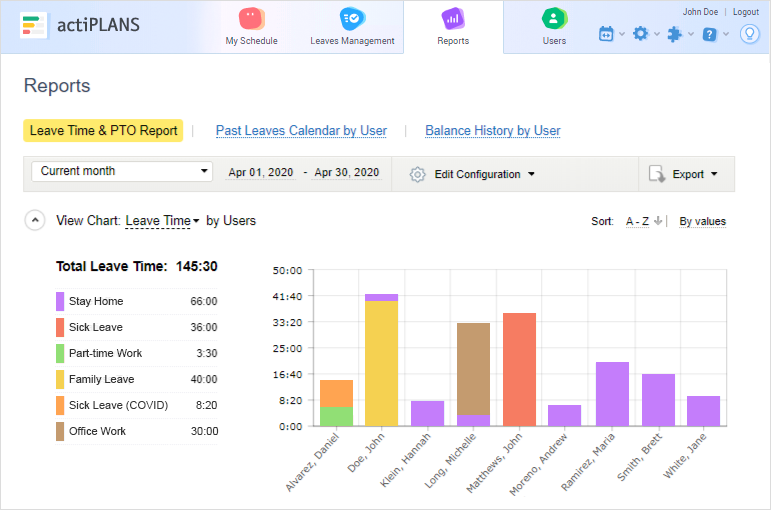
Analyze employee attendance and absence trends using actiPLANS reports.
7. Start with a trial run
If you’re new to flexible working, it’s best to start out with a trial before implementing a permanent policy.
For a small staff, you can try the test run with your entire office and let everyone decide their flexible working preferences. But if you have a large office, you may want to try a trial run with specific workers.
Set a time limit for your trial run. You may want to execute your trial run for a few months or even a full year. At the end of this time limit, collect the information mentioned in the previous section.
What if you endured some problems? That doesn’t mean you shouldn’t continue flexible working. Find solutions to these problems before creating a permanent policy.
8. Be fair but firm
Allowing employees to have a flexible schedule is very fair. But you also have to be firm with your policy. Explain they’re expected to communicate, collaborate on projects, stay productive, and meet deadlines.
You’ll also want to explain any metrics or software you’re using to monitor their performance. If you perform regular audits, you should also communicate this to your employees.
While flexible working comes with many benefits, employers will only see this positively affect their business if they can properly communicate the employee’s requirements.
What if you notice an employee is slacking off or struggling? Don’t assume worst-case scenarios. Start by communicating their problems or giving them a warning. If you notice this slacking-off behavior is running rampant among your entire staff, make some changes to your flexible working policy.
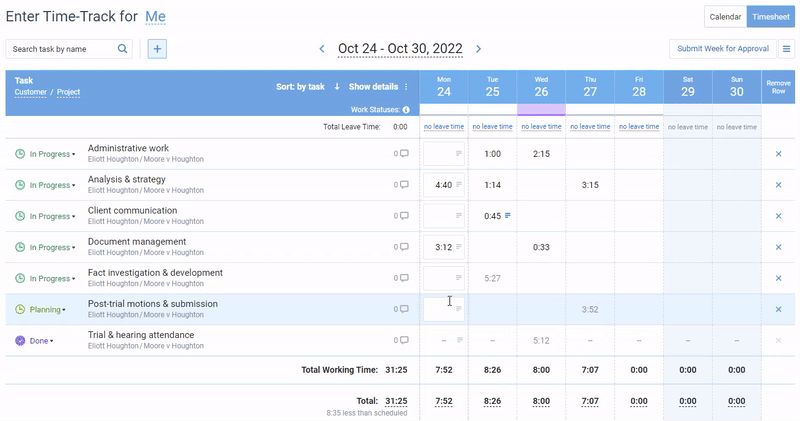
Use actiTIME to track employees’ hours and stay on top of team performance no matter where and when they work.
10. Set a good example
Are you switching to flexible working hours, too? If so, set a positive example for your staff members.
First, experiment with different flexible working options if you’re not sure what you want. Work from home one day a week or shift your hours. Always find time to communicate with your distributed team.
When you switch to a flexible schedule yourself, you may find the policy easier to implement and you may also manage your staff better if you’re all engaging in flex work.
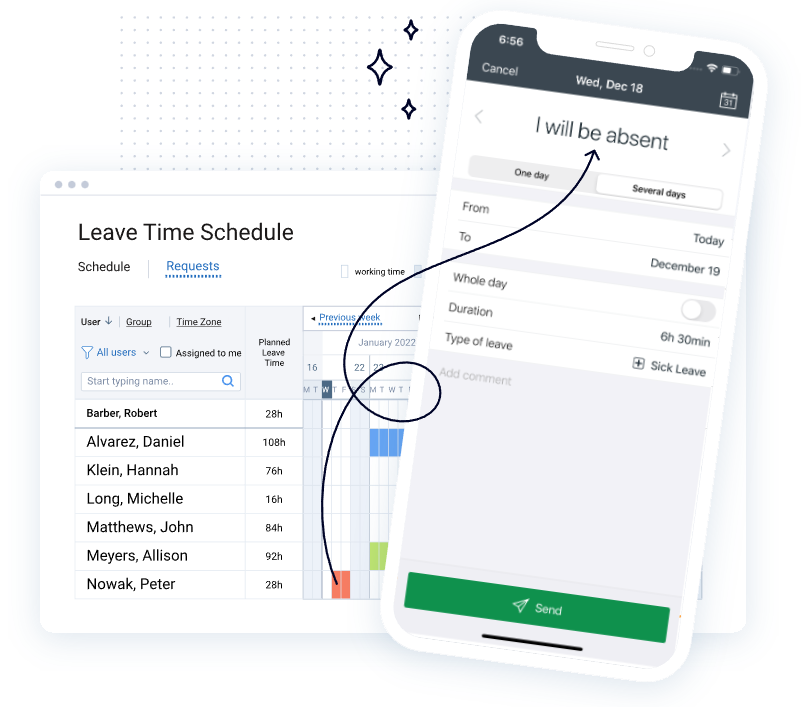
Quickly inform colleagues about changes in your schedule and track employee availability right on your smartphone with actiPLANS Mobile.
10. Keep everything reason-neutral
Your staff members have different lives outside of the office. Some are parents and want to organize their schedules around their children. Others are just more productive when they work from home.
Others may have more sensitive reasons for working flexible hours or remotely. For example, maybe a staff member has a sick family member and is helping to take care of them.
Because of this, you should keep your flexible work culture reason-neutral. Don’t make your employees explain why they want a specific schedule. Focus on whether or not your employee is productive.
There are exceptions to this advice. Let’s say a staff member has a sick family member and has to work from home. If there’s a required in-person meeting and the staff member can’t attend, they may state their family obligations as a reason why. Accept this reason and offer another alternative, such as letting the staff member join via video or chat.
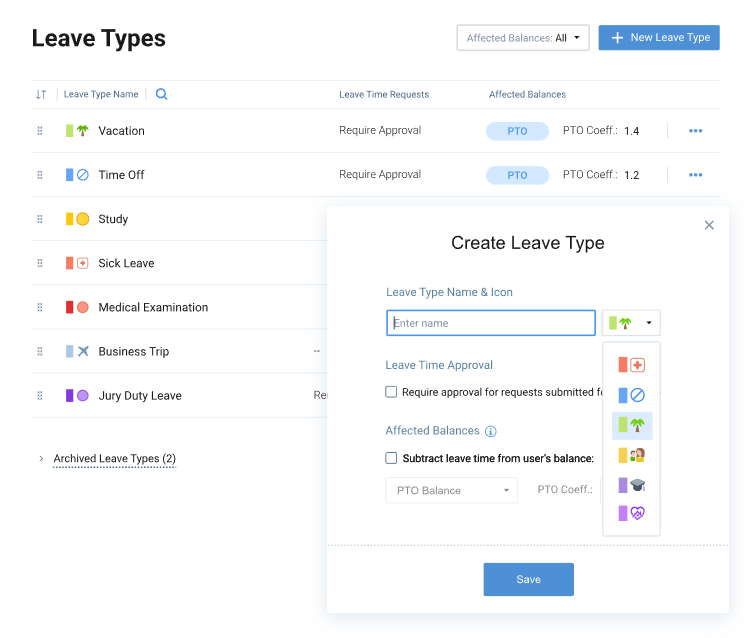
Create and manage numerous custom leave types in your actiPLANS account.
Manage Flexible Schedules the Easiest Way
Flexible work schedules sound like a dream, but they can be a nightmare if not managed properly. Our 10 golden rules on how to manage flexible work schedules will help you get the most out of your team and make it easier to adapt to ever-changing workplace needs.
Need some extra help managing those oh-so-important flexible work hours? Try out actiPLANS!
This modern resource scheduling solution lets you create custom work activities and leave types tailored specifically to your team’s needs. From 9-to-5 working days to graveyard shifts, from personal time off to mental health days, you are free to choose what items to add to your account. Then, schedule them on a visual timeline and get a clear overview of who’s available and when.
On top of that, actiPLANS features reports that show what’s going on in your team – you see who’s taking the most “stress relief” days or who’s working night shifts most often. Besides, you can integrate your actiPLANS with actiTIME – a multifunctional time tracking solution – to monitor team performance and productivity.
It’s like a power-up for your already-amazing flexible work schedule management skills. Click here to check it out in action yourself.



